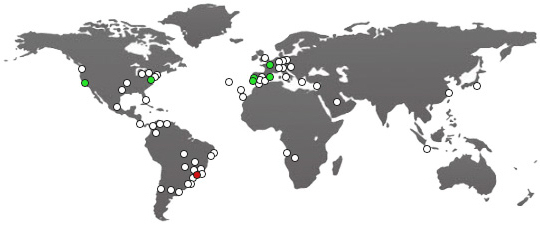Home page Care Health Treat Cancer Skin Cancer - Melanoma
Skin Cancer - Melanoma - Treat with Aloe Arborescens / Vera

The medical plant Aloe Arborescens treats Skin Cancer - Melanoma more efficiently than Aloe Barbadensis (Aloe Vera)
Research from the Palatini Institute in Salzano, Venice, Italy, rvealed that Aloe Arborescens is 200% richer in medicinal properties than Aloe Barbadensis (Aloe Vera).
Aloe Arborescens is of all known plants the plant with the highest number of identical enzymes in our body: it fills 73 of the main 95 enzymes of the human body.
According to multiple scientific reports, Aloe Arborescens is extremely effective in the following areas: it detoxifies and cleanses blood vessels; Is effective in intestinal health, heartburn, reflux, gastritis and other diseases resulting from the malformation of the Immune System.
Melanoma, also known as malignant melanoma, is a type of cancer that develops from the pigment-containing cells known as melanocytes. Melanomas typically occur in the skin but may rarely occur in the mouth, intestines, or eye. In women they most commonly occur on the legs, while in men they are most common on the back. Sometimes they develop from a mole with concerning changes including an increase in size, irregular edges, change in color, itchiness, or skin breakdown. The primary cause of melanoma is ultraviolet light (UV) exposure in those with low levels of skin pigment. The UV light may be from either the sun or from other sources, such as tanning devices. About 25% develop from moles. Those with many moles, a history of affected family members, and who have poor immune function are at greater risk. A number of rare genetic defects such as xeroderma pigmentosum also increase risk. Diagnosis is by biopsy of any concerning skin lesion. Using sunscreen and avoiding UV light may prevent melanoma. Treatment is typically removal by surgery. In those with slightly larger cancers, nearby lymph nodes may be tested for spread. Most people are cured if spread has not occurred. For those in whom melanoma has spread, immunotherapy, biologic therapy, radiation therapy, or chemotherapy may improve survival. With treatment the five-year survival rates in the United States is 98% among those with localized disease and 17% among those in whom spread has occurred. The likelihood that it will come back or spread depends how thick the melanoma is, how fast the cells are dividing, and whether or not the overlying skin has broken down. Text origem Wikipedia. More information at https://en.wikipedia.org/wiki/Melanoma







